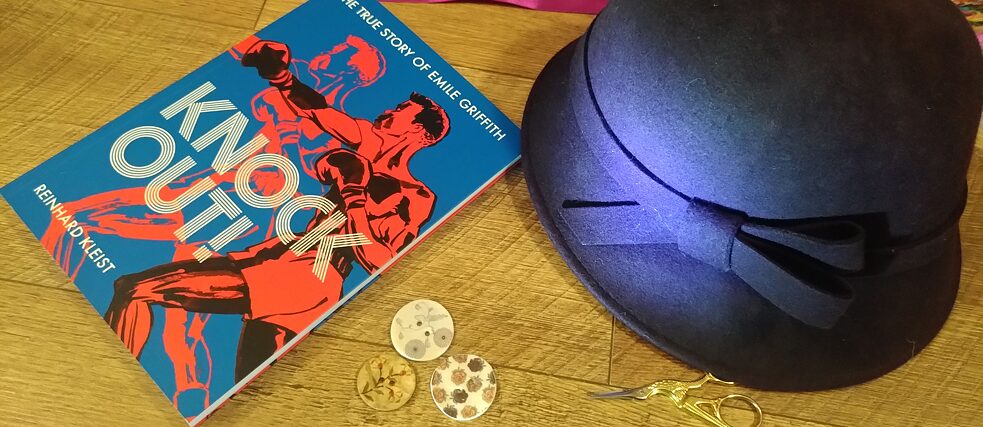February 2022
Reinhard Kleist: Knock Out!

If you enjoyed the film I, Tonya, you might enjoy the graphic novel Knock Out!
The 2017 film I, Tonya was a critical and popular success when it came out, scooping 3 Oscar nominations and shining a light on some 1990s ice skating history. Deftly combining compassion with a wicked sense of humour, the film re-imagines the early life of figure skating champion Tonya Harding and her apparent complicity in the brutal attack on her rival, Nancy Kerrigan, which ended Harding’s career.
It might seem like a strange comparison, but Reinhard Kleist’s graphic novel Knock Out! (translated by Michael Waaler) offers a glimpse into the life of another athlete whose career was mired in scandal, with a similar mix of tragedy and humour. Emile Griffith was already a world boxing champion when he gained a less welcome notoriety in 1962, after his opponent Benny Paret died from injuries incurred in the ring.
A sidenote here: I’m not a boxing fan, and I’m really not good with violence. (I avoided watching I, Tonya on its release for this very reason.) But Knock Out! is a genuinely sweet and thoughtful story, whether or not you’re interested in the sport.
In dynamic black and white images, Reinhard Kleist sketches the life of a young man who never intended to become a boxer. Instead, Emile’s first love (after the mother he adores) is hat-making – and the scenes in which he crafts feathered or flowery creations offer a tender counterpoint to the energy of the ring. The bafflement on the faces of the sports journalists when Emile gushes that the Jackie Kennedy pillbox will never go out of fashion is a gem which had me laughing out loud.
Life isn’t simple for the young man though, who was black and bisexual at a time when the civil rights movement had only just begun. Kleist depicts the abandon and community of the gay clubs, but also the police raids, the rumours, the taboos. (Kleist cunningly avoids pathos here. When Emile’s coach tells him to keep his love life on the downlow, Emile protests, “But I like people talking about me! I sell more hats!”) The climax of the book is, of course, the fateful fight with Benny Paret – who greets Emile at the weigh-in with a homophobic slur. After the fight, and Paret’s death, Emile continues boxing – but he is haunted by the image of Paret and terrified of hurting someone else in the ring.
In a surprising framing narrative which works remarkably well, an older Emile revisits these pivotal moments in his life in conversation with Benny Paret’s ghost – who is trying to keep Emile conscious after he’s been attacked leaving a gay club. Sounds odd, I know, but it’s characteristic of Kleist’s generous ability to give space to contradictions; while Emile confesses to being haunted by his sense of guilt, Benny offers compassion – and yet denies any kind of final absolution.
About the author
Annie Rutherford is an incorrigible bookworm and Jill of all (word-based) trades. She is the Assistant Festival Director at StAnza (Scotland’s international poetry festival), a German-English literary translator, and runs Lighthouse Bookshop’s Women in Translation book group, among other things. She has been known to read while cycling (she does not recommend it), and can spot a misplaced apostrophe at a distance of fifty yards.Find out more about the blog.
Book Blog Overview